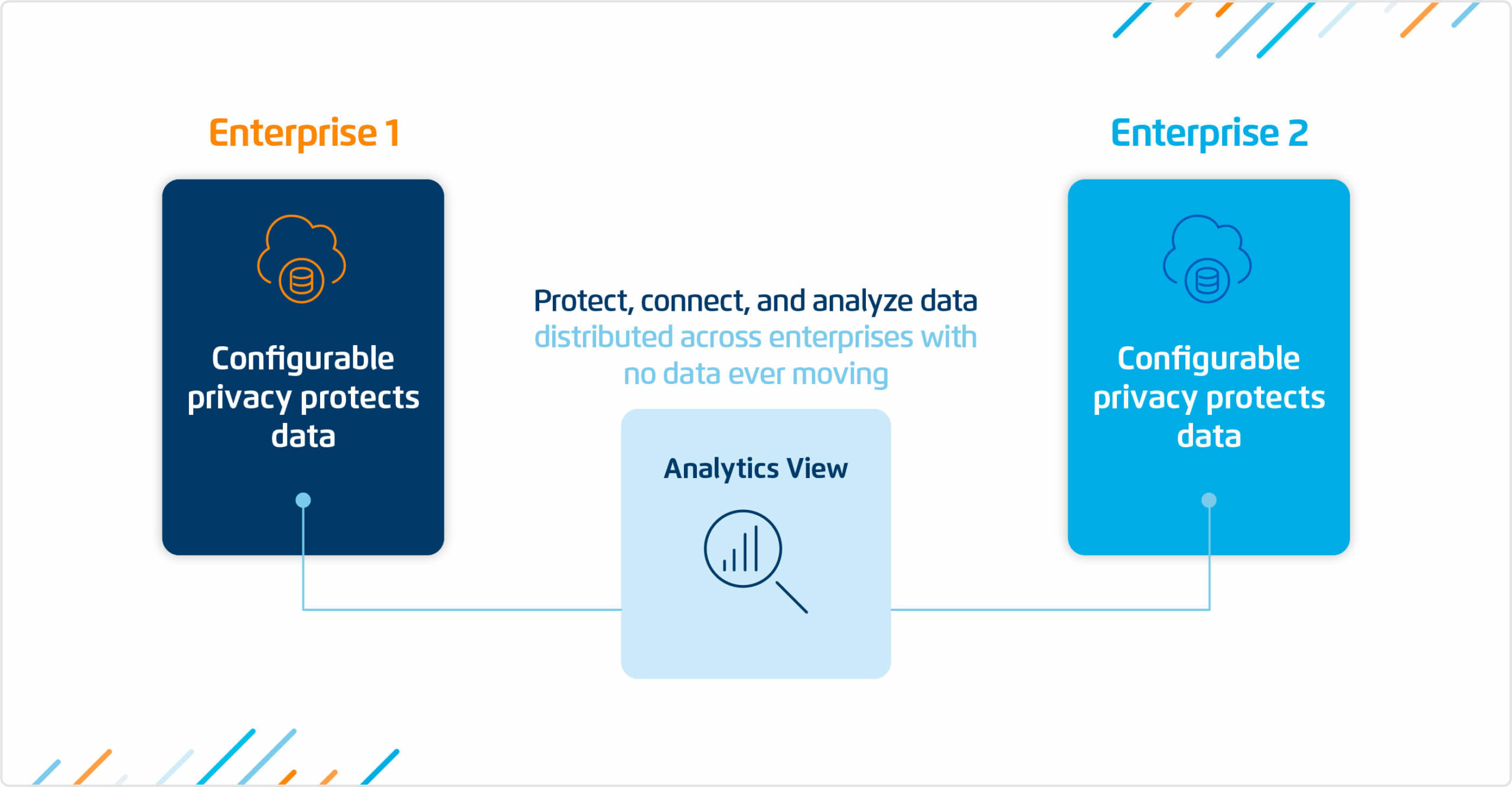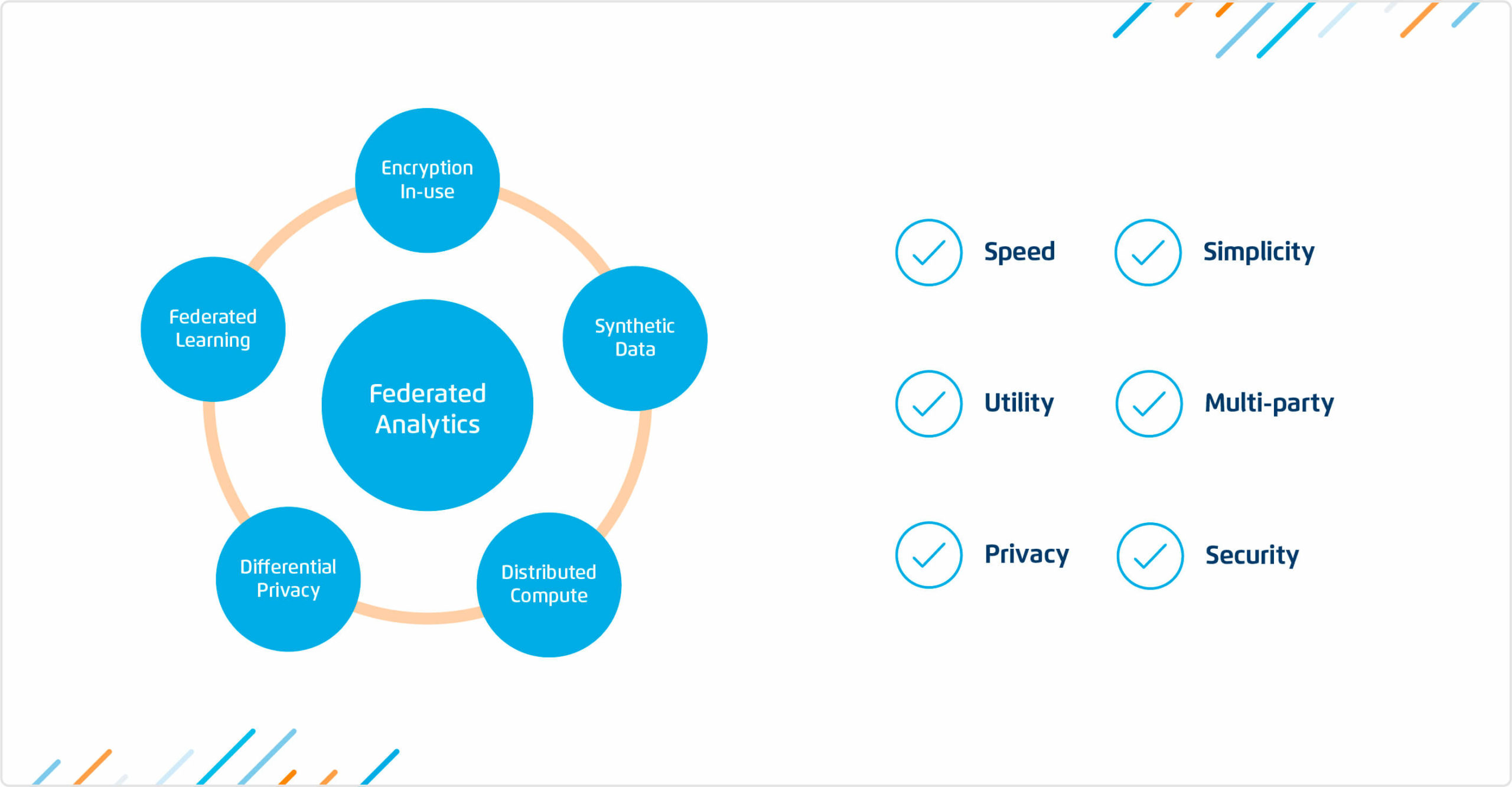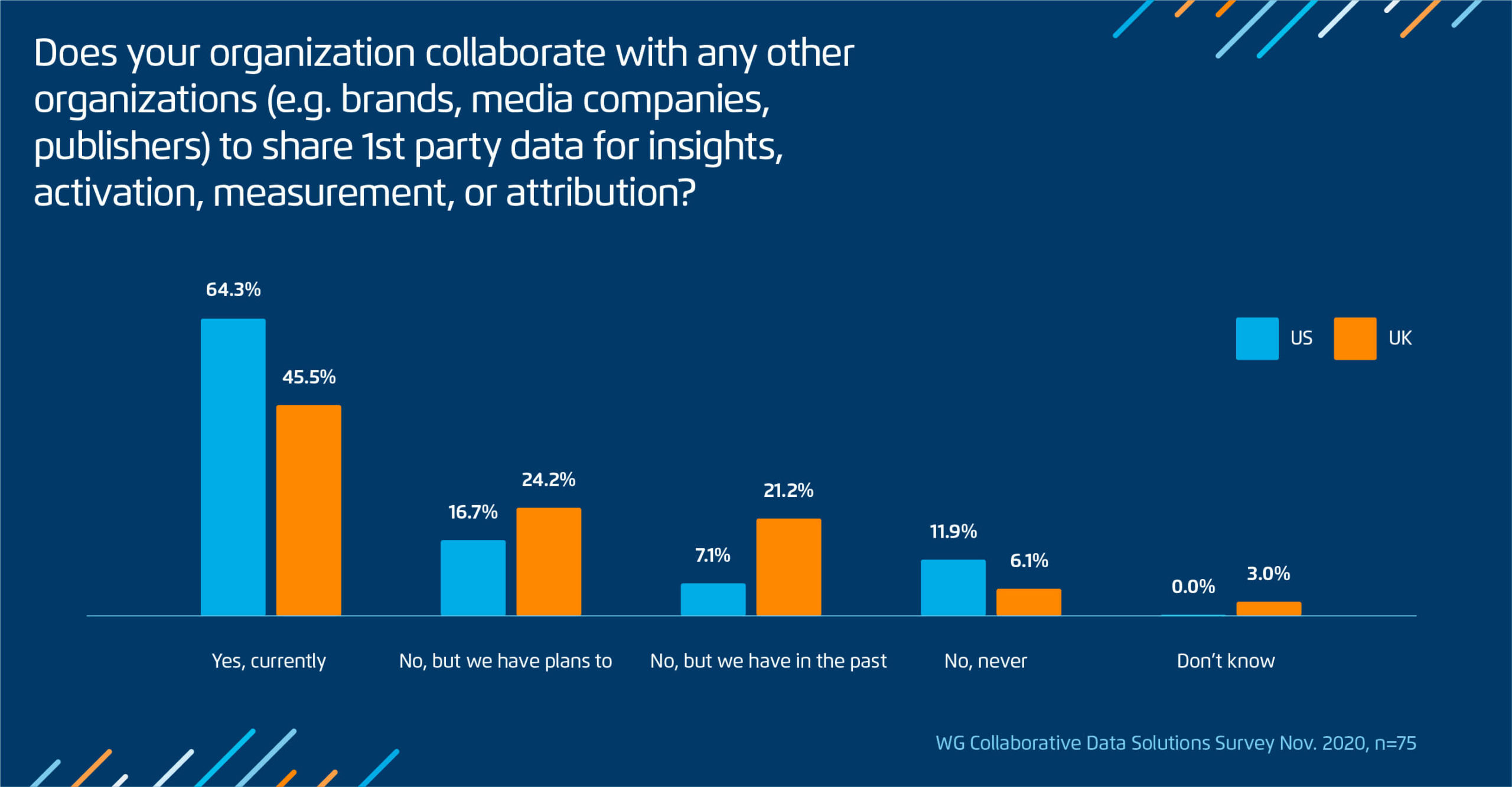We hear this question often: “How can I make the most of my data and keep it safe?” To answer it, customers have to consider the type of data, how it was collected, where it is stored, what was communicated to consumers, and what data can leave your enterprise. These are difficult areas to navigate as data protection is not one-size-fits-all.
We thrive on working with enterprises across the globe to define and implement a data strategy for their current and future business needs. That’s why we’re excited to share how we’re expanding our secure data collaboration infrastructure so we can offer increased connectivity to data—wherever it resides—while keeping data owners in full control.
Today, we are proud to announce that we’ve entered into a definitive agreement to acquire DataFleets. DataFleets’ technologies offer a next-generation set of privacy-preserving data controls that analyze and remove barriers to data access and usage, while also freeing data from having to be copied or moved to another location for processing. Simply put, DataFleets’ game-changing technology keeps useful data private, and private data useful.
Next-generation privacy technology for analytics and data collaboration
During a socially distanced walk and talk with David Gilmore, CEO and cofounder of DataFleets, he told me that in five years, we’d look back at today and think it was crazy that companies used to provision full tables of data to analytics teams. His team came up with a two-fold solution for enabling analysts to safely and securely access the data they need without data movement or the threat of exposing sensitive information at the row-level:
- Privacy: DataFleets provides a privacy mechanism that allows users to control and configure access, enabling the analysis of a data set without access to row-level data
- Federation: DataFleets’ privacy technology enables databases to be securely connected across cloud platforms, infrastructures, and geographies, and accelerates data sharing with configurable trust, so data used in analytics no longer needs to be centralized or specifically permissioned and provisioned for use

DataFleets’ capabilities integrate multiple advanced privacy technologies, giving users unprecedented flexibility in configuring their privacy controls as required by their data and processing needs. We immediately recognized that we were philosophically aligned in how we wanted to enable data utility alongside the freedom of choice for data owners to set appropriate parameters for access—a core tenet of how we built our data collaboration infrastructure, LiveRamp Safe Haven. Unlike existing solutions that have adopted a one-size-fits-all approach, LiveRamp products and platforms, enhanced with DataFleets’ technology, provide enterprises more flexible options for distributed data collaboration.
Unlock new, privacy-first analytics use cases
Companies are more reliant on data and analytics to guide major decisions than ever before. In working with multinational companies and those looking to enter new markets, we identified a burgeoning need for teams to collaborate not only internally in different geographies, but also with partners that could be based anywhere, to achieve a global competitive advantage. DataFleets’ federated learning technology enables enterprises to analyze data where it resides and across silos as if they were all in one database.
In that database, analysts can safely and securely assess the data they need through DataFleets’ novel combination of three classes of privacy-enhancing computation technologies (noted by Gartner as a top technology trend for 2021):
- Trusted environments protect data and enable analytics while ensuring that no sensitive data leaves the environment
- Decentralization enables analytics on distributed data sets without requiring them to be aggregated
- Secure processing enables data and algorithms to be encrypted before data processing
DataFleets’ holistic approach to data collaboration challenges combines several leading-edge technologies that can be configured based on business needs. This allows users to keep privacy and security first and foremost and maximize data utility across parties, all in a simplified and expedient manner.

By unlocking global data insights without compromising on control, security, and privacy, DataFleets makes it easier for teams to make intelligent connections across data sets and drive better customer experiences.
Retain control of sensitive data across geographies, entities, and industries
DataFleets’ technology is not only able to adapt across borders and jurisdictions, it also has privacy designed into its infrastructure. This will expand and propel LiveRamp’s offerings across geographies and highly regulated industries such as health care and financial services.
A timely example is DataFleets’ use in a recent COVID-19 research initiative: a consortium of academic research and health care institutions use DataFleets to access the largest inpatient clinical database of COVID-19 patients in the United States, without transferring data to the other parties. The partnership allows medical researchers to rapidly produce new evidence to improve the safety and quality of care for COVID-19 patients—a critical step in reducing the mortality rate for the disease.
Stay ahead of the competition
According to research LiveRamp commissioned through the Winterberry Group, 70% of surveyed executives across the US and UK are currently or plan to collaborate with other organizations to share first-party data for insights, activation, measurement, or attribution.

Through acquiring DataFleets and embedding its technology into LiveRamp’s products and platforms, we believe that companies exploring data collaboration solutions can keep consumer privacy at the forefront, accelerate planned innovations to the customer experience, and stay ahead of the competition.
To learn how LiveRamp’s data collaboration technology can address your business needs, contact us.
